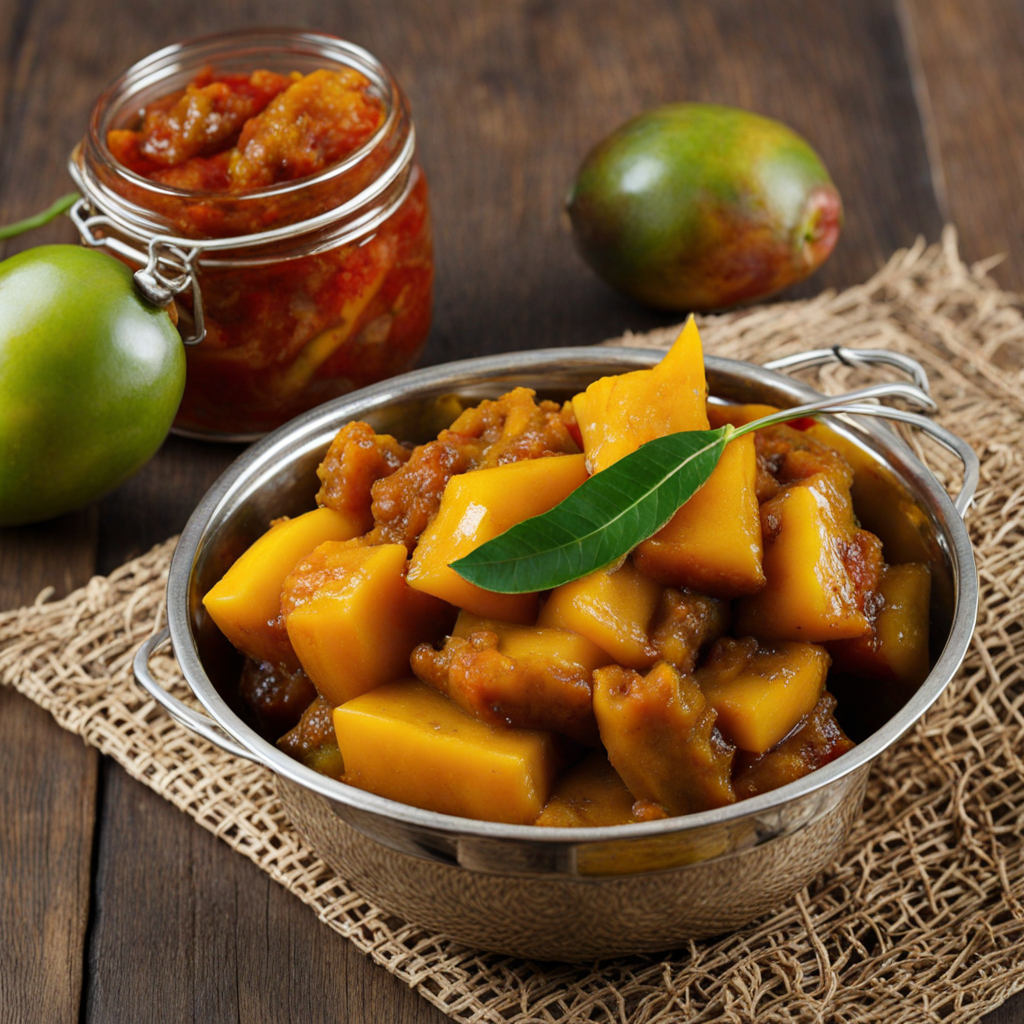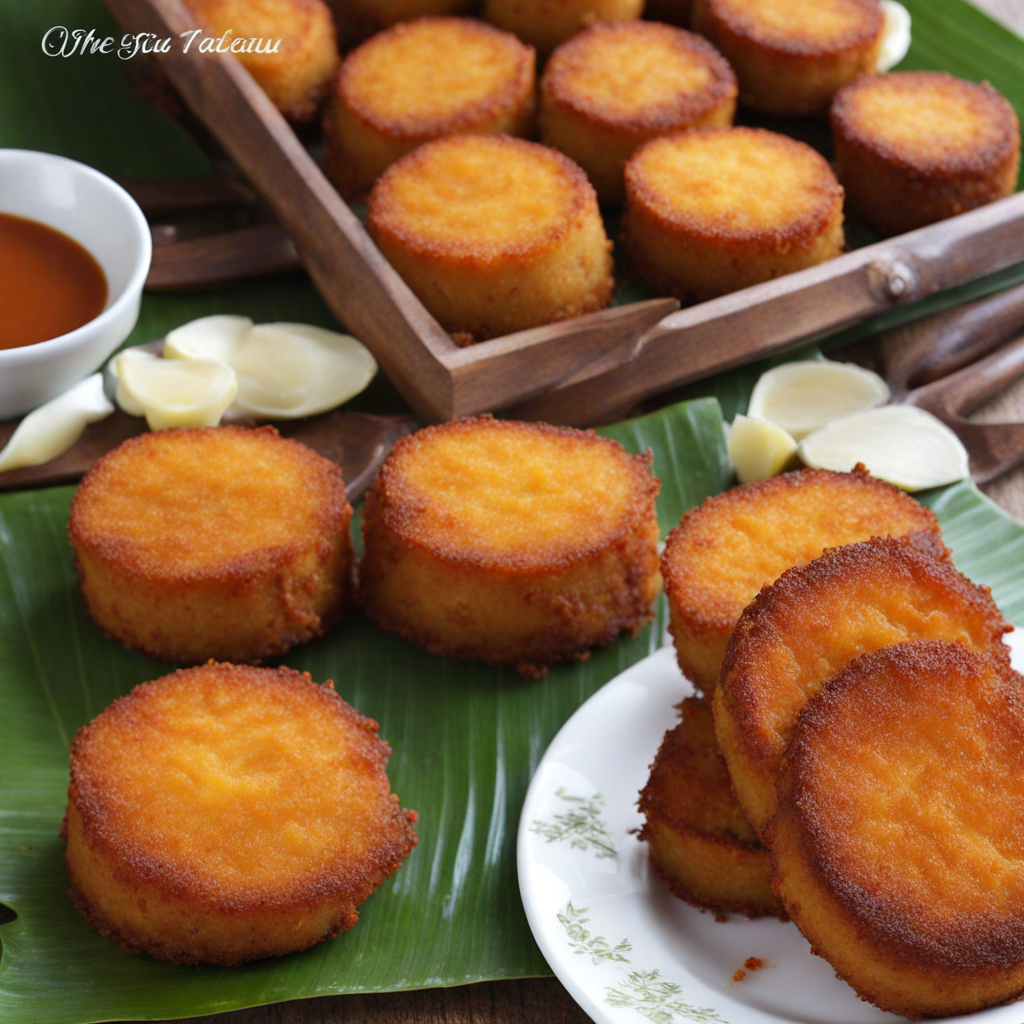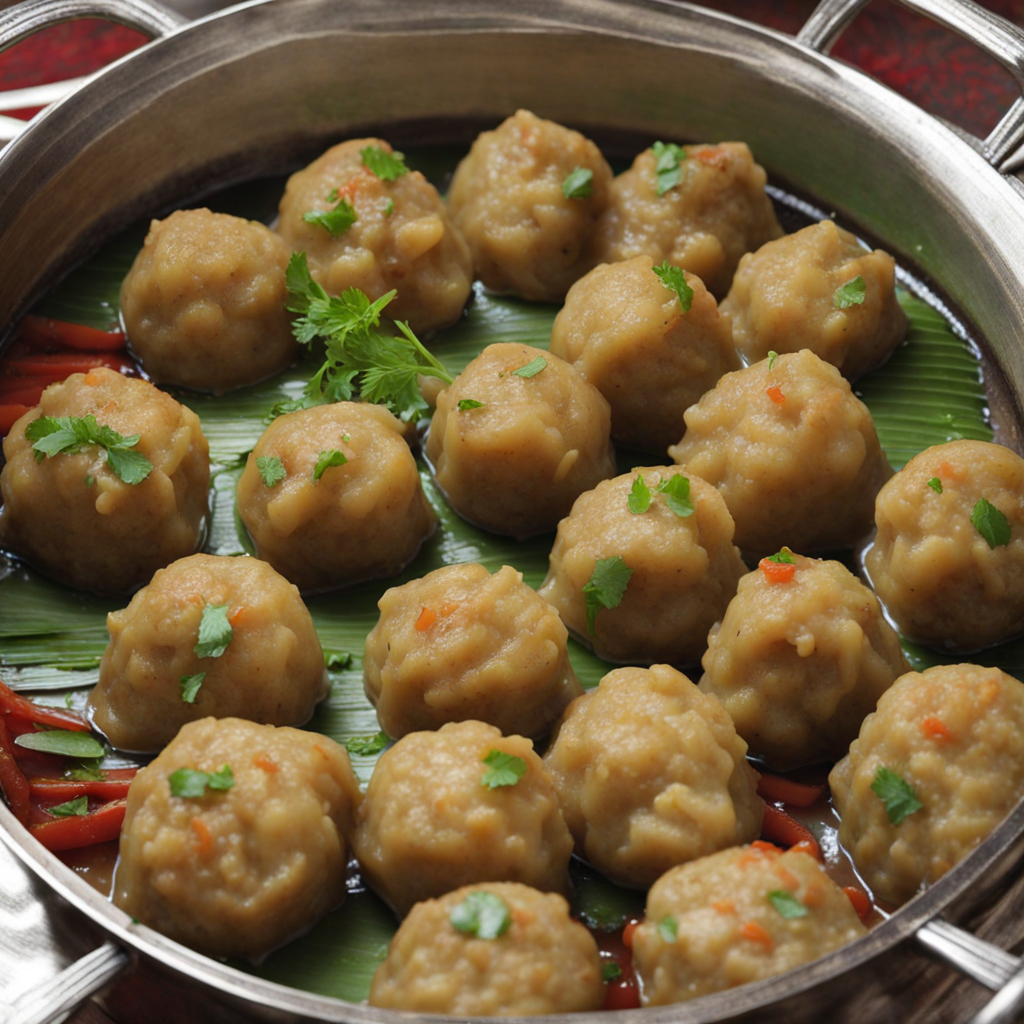Mango Pickle
Mango pickle, a delightful condiment hailing from Mauritius, is a vibrant and tangy fusion of flavors that captures the essence of the island's culinary heritage. Made primarily from raw, green mangoes, this pickle is a celebration of the tropical fruit's tartness, combined with a symphony of spices that enhance its natural taste. The mangoes are typically diced and marinated in a mix of mustard seeds, turmeric, chili powder, and salt, allowing the ingredients to meld together and create a robust flavor profile that is both refreshing and piquant. As the mangoes soak up the spices, the pickle develops a beautiful balance of sweetness and heat, reminiscent of the warm Mauritian sun. The addition of ingredients like garlic, ginger, or even vinegar can elevate the mango pickle further, introducing layers of complexity that tantalize the palate. This versatile condiment can be enjoyed alongside a variety of dishes, including curries and rice, or even as a zesty topping for sandwiches and wraps, making it an essential staple in Mauritian cuisine. Mango pickle not only serves as a delicious accompaniment but also reflects the island's rich cultural tapestry, influenced by various culinary traditions. Its vibrant color and bold flavors embody the spirit of Mauritius, inviting food lovers to explore the unique taste of this tropical paradise. Whether you're a seasoned pickle enthusiast or a curious newcomer, mango pickle promises an unforgettable experience that will leave you craving more of its delightful tang.
How It Became This Dish
Achar: The Tangy Legacy of Mauritius Achar, a delightful condiment that embodies the rich culinary heritage of Mauritius, serves as a testament to the island's diverse cultural influences and its vibrant history. This tangy and spicy pickle, often made from a variety of ingredients, is not just a food item, but rather a cultural emblem that reflects the island's unique blend of traditions, flavors, and peoples. Origins of Achar The roots of achar can be traced back to the Indian subcontinent, particularly to the traditional pickling practices prevalent in various regions, such as Gujarat and Punjab. The word "achar" itself is derived from the Sanskrit “achar,” meaning “behavior” or “conduct,” which also alludes to the method of preservation that has been part of human culinary practices for centuries. When indentured laborers from India arrived in Mauritius in the 19th century, they brought with them a wealth of culinary knowledge, including the art of making achar. Mauritius, a melting pot of cultures, saw the fusion of Indian, African, Chinese, and French influences over time. The island’s strategic location along trade routes facilitated the exchange of spices, flavors, and cooking techniques, creating a unique Mauritian culinary identity. The introduction of local ingredients, such as tropical fruits and spices, into the Indian pickling tradition gave rise to a variety of achar that is distinctly Mauritian. Cultural Significance Achar holds a special place in the hearts and kitchens of Mauritian families. It is more than just a condiment; it is a symbol of the island's multicultural identity and communal bonding. Often prepared during family gatherings, festivals, and celebrations, achar brings people together, evoking nostalgia and a sense of belonging. In Mauritian households, the process of making achar is often a communal activity, passed down through generations. Each family has its own recipe, with variations in ingredients and techniques, reflecting personal tastes and regional influences. This practice not only preserves culinary traditions but also strengthens family ties and cultural identity. The significance of achar extends beyond the domestic sphere; it is a staple accompaniment to many traditional Mauritian dishes. Served alongside rice, curries, and snacks, achar enhances the overall dining experience with its bold flavors. Its presence on the dining table signifies hospitality and the warmth of Mauritian culture, welcoming guests to enjoy the island's bounty. Ingredients and Varieties The versatility of achar is one of its defining features. While the traditional Indian achar is often made with mango or lime, Mauritian achar showcases a broader range of ingredients. Depending on the season and availability, local fruits such as green mangoes, lemons, or even chili peppers are commonly used. Vegetables like carrots, cucumbers, and radishes can also be pickled, creating a colorful array of flavors and textures. The preparation of achar typically involves marinating the chosen ingredients in a mixture of salt, spices, and vinegar. The spices used in Mauritian achar often reflect the island’s diverse influences, with ingredients like mustard seeds, fenugreek, turmeric, and chili powder taking center stage. The balance of sweet, sour, and spicy flavors creates a complex taste profile that tantalizes the palate. One popular variation is the "achar de piments," made from green chilies that are pickled with a blend of spices, while "achar de mangue" features green mangoes marinated in a spiced vinegar solution. Other regional specialties include "achar de carotte," a tangy carrot pickle, and "achar de citron," made from lemon zest. Each version tells a story of its own, reflecting the creativity and resourcefulness of Mauritian cooks. Development Over Time As Mauritius has evolved, so too has the preparation and consumption of achar. The 20th century brought significant social and economic changes, influencing culinary practices across the island. Urbanization and globalization introduced new ingredients and ideas, prompting chefs and home cooks alike to experiment with traditional recipes. In contemporary Mauritius, achar has transcended its role as a mere condiment to become a sought-after delicacy. It is now featured in gourmet restaurants and food festivals, showcasing the culinary artistry of the island. Chefs have begun to reinterpret achar, incorporating innovative techniques and modern twists while still honoring its traditional roots. The rise of food tourism in Mauritius has also played a crucial role in popularizing achar. Visitors to the island often seek authentic culinary experiences, and achar has become a focal point in many cooking classes and culinary tours. This newfound appreciation has not only elevated the status of achar but has also ensured its continued relevance in an ever-changing culinary landscape. Achar in the Global Context The global movement of food has allowed achar to gain recognition beyond Mauritius. As Mauritian communities have settled in various parts of the world, particularly in countries like the United Kingdom, Australia, and Canada, the flavors of achar have traveled with them. Food festivals and cultural events celebrating Mauritian cuisine often feature achar as a highlight, introducing this vibrant pickle to a wider audience. The rise of social media has further amplified the visibility of achar, with food enthusiasts sharing recipes and showcasing their culinary creations online. This digital renaissance has sparked interest in the diverse flavors of Mauritius, promoting cultural exchange and appreciation for its unique culinary heritage. Conclusion Achar is more than just a condiment; it is a reflection of Mauritius's rich history, cultural diversity, and communal spirit. As a culinary artifact, it encapsulates the island's journey through time, showcasing the blending of traditions and the resilience of its people. From its humble origins as a method of preservation to its contemporary status as a beloved delicacy, achar continues to evolve, much like the island itself. In every jar of achar lies a story—a story of migration, adaptation, and creativity. It is a reminder that food is an integral part of our identity, a medium through which we connect with our past while embracing the future. As Mauritius moves forward, the legacy of achar will undoubtedly remain, a zesty symbol of the island's vibrant culinary tapestry.
You may like
Discover local flavors from Mauritius







